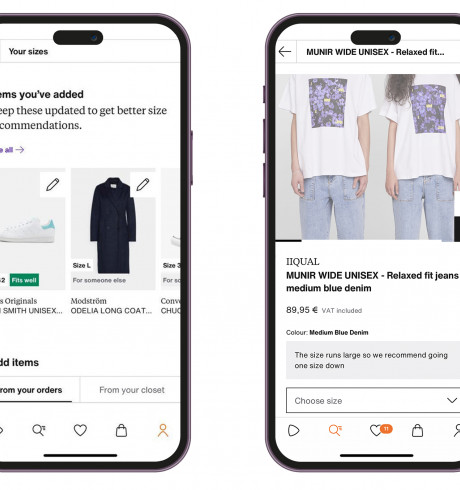How Zalando leverages technology to help customers find the right size
How Zalando leverages technology to help customers find the right size

How many times have you bought an item in your usual size to discover that it doesn’t fit well? The lack of standardisation of what a size ‘L’ or size ‘48’ means is one of the main problems of the fashion industry. In fact, one third of Zalando’s overall returns are size-related returns. Shrinking this number and giving reliable size advice to our customers is therefore an important topic for us. This is why we have an in-house team working on Size & Fit—something unique for e-commerce fashion companies in Europe.
Since the introduction of industrial manufacturing for fashion items in the 19th century, the way garments have been made—as well as their respective fit—has changed drastically. While before, tailors got direct feedback from their customers, this feedback gradually disappeared over time. We believe that this gap can be bridged with the use of data and technology, allowing a reconnection between consumer and creator that ensures a personalised and highly satisfactory fit.
Our solutions
Over the past few years, Zalando has been investing in in-house solutions to provide size advice to its customers. By combining human expertise and technology, such as machine learning and computer vision among others, we help customers find the right size the very first time. As a result, we have been able to reduce size-related returns by 10% compared to items where we don’t offer size advice.
Size flags
Size flags inform customers if an item is true to size or not. Based on this, we provide any necessary advice: “the size runs small so we recommend going one size up”, “the size runs large so we recommend going one size down”. Flags are triggered by an algorithm that takes different data sets into account: the information provided by the brand about the item, e.g. its measurements, the customers’ returns history and their return reason as well as the information provided by the fitting models—a dedicated team within Zalando that tries on items helping to identify sizing issues.
In addition, when an item from a certain brand is flagged as running too large or too small, we use computer vision to detect issues based on image level, whether an item of the same brand is likely to have similar sizing problems. This way, we can flag items even when they have no customer purchase and return history.
Size recommendations
Size recommendations provide personal size advice on the basis of several data points: the customers’ purchase history including return reasons as well as information they provide in the “your sizes” section of the customer profile. This includes fit feedback on items they have ordered and size reference items that fit customers well, regardless of where they purchased them.
Since July 2023, customers can also receive personalized size recommendations based on their body measurements. They just need to take two pictures with their phones, front, and side, wearing tight clothes, and then we can predict the customer measurements and recommend a specific size. We became the first company in the fashion industry at our scale in introducing such feature.
Our ambition
Helping customers find the right fit the first time is an important part of deepening customer relationships. But apart from that, it also has the potential to benefit the environment: by reducing returns we are able to reduce CO2 emissions as less shipments are made. On a broader scale, we also see the potential to help brands better understand their customers’ size and fit requirements too. This means that brands could learn more about the fit of their items to manufacture collections that are tailored to customers in a way that will consume less material and produce less waste.
We are working on bringing new solutions to the customer to take size advice to the next level, such as a full virtual try-on experience, where customers can see how an item would fit a 3D representation of their bodies.